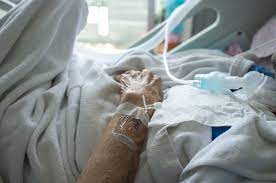Word count
1600 words – this means the maximum you can write is 1760 words (10% above) – this figure does NOT include in-text references The minimum you should write is 1440 words (10% below) – this figure does NOT include in-text references If you write less than this it is likely that you have not provided enough details in your answers and will be at risk of failing this assessment task I have not provided a guide to word counts per section as this will vary per case – however use the marks allocated per section to guide you.
Professional Accountability & Patient Safety Assessment-Australia.

FIRST
Identify a case from the NSW Nurses and Midwives’ Board or HCCC, Case law or AHPRA website which involved a registered nurse(s) who had their registration cancelled or suspended for greater than 6 months due to their involvement in an adverse event for a patient in their care (This will be work shopped in tutorial 2).
Access the following websites and choose a case that fits the description above (see highlighted terms) and that interests you.
NB: You need to provide the reference number and link to the case (the full case not a summary) – your assessment cannot be marked without it.
NB: If your case involves more than 1 RN you can discuss them all in your essay
THEN structure your assignment to include the following information
What actions/omissions on the part of the Registered Nurse(s) contributed to the adverse outcome for the patient
- Actions – what did the RN(s) DO that contributed to the adverse event e.g. administer the wrong medication
- Omissions – what did the RN(s) NOT DO that contributed to the adverse event e.g. failed to report a deteriorating patients
- Don’t just provide a dot point list – please structure this information in essay format.
- If there are a number of items to discuss you may want to group them together under headings and provide examples e.g. failure to complete observations on patient as required – the RN did not record any observations during their 12 hour shift for the patient
NB: you do not need to provide references here – you have already told us which case you are reporting on
Were there any other factors (e.g. systems-based) that contributed to the adverse outcome for this patient?
- Were other factors listed as also contributing to this adverse event for the patient e.g. actions/omissions of other healthcare staff
- “System-based errors” are often implicated in adverse events – make sure you understand what this terms means
o Systems-based errors are different from human-based errors – the actions/omissions of the RN(s) would be human-based errors.
o Systems based errors can include things like skills mix, ratios, mixing adults and children on the same ward, equipment not in working order.
o I have uploaded an article to give you some more background on this topic - HINT: if you think there aren’t any other factors – ask yourself if the RN(s) made these errors (actions and/or omissions) – how did they go unnoticed and lead to an adverse event? How were they allowed to happen?
- NB: you do not need to provide references here – you have already told us which case you are reporting on

Professional Accountability & Patient Safety Assessment-Australia.
With reference to the evidence based literature (including relevant NSW policies) outline the actions that should have been taken by the Registered Nurse(s) to prevent the adverse outcome for the patient.
- This is essentially asking how could this adverse event have been avoided
- This should follow on logically from your discussion in the previous sections
- This should align with the information you provided in section 2 of your essay
o What actions did the RN(s) take that they should not have and what should they have done
o What omissions did the RN(s) take (what didn’t they do that they should have) and what should they have done
o What guidelines currently exist that tell us what to do in this situation? E.g. NSW Health policies, local protocols, guidelines - How would the correct actions have changed the outcome for the patient e.g. deterioration would have been picked up and care escalated
- For the higher marks look beyond policies to the evidence in the topic e.g. if your patient died as a result of deterioration not being picked up – there is a body of evidence focused on the deteriorating patient
- The evidence is the rationale for the actions you are recommending – the “why”
NB: This section does require evidence – remember if you don’t reference your work it reads just like your opinion on something and this will pull your mark down. Please ensure you use not only policies etc but also use evidence based
literature to support your discussion -this is specified in the rubric
Conclusion
Academic literacy
- This is a 3rd year assessment so the quality of your writing and referencing should be at this level
- Remember to structure as an essay – starting with a brief introduction and conclusion
- Often it is easier to come back and write the introduction last – they can be tricky to start
- Don’t include any new information in your conclusion – sum up your discussion
- Formal writing – use formal words and avoid slang or personal terms – unless you are quoting from your case (make sure to indicate if you are doing this)
- Write in the 3rd person – avoid personal terms like “I” think – this should be objective writing (not subjective – which is your opinion)
- Spelling – this should be Australian spelling – so make sure your spellcheck is set for this and not US spelling
- Paragraphs – don’t make these too short – e.g. they should be at least 3 sentences long
- OR too long – they should not cover a whole page – break your writing up into manageable chunks – don’t do one paragraph for each answer
- Sentences – these should not be too short or they read as dot points – but they also shouldn’t be so long that they take up a whole paragraph
- Don’t forget to use in-text references to back up your discussion in the last section
- Headings – you can use headings to structure your essay to line up with the questions asked if you would like – however remember your essay should still flow and these should not be presented as discrete answers – they must link together – otherwise this will pull down your marks
- Proof read – it is always a good idea to print out your paper and read it – that way you often pick up errors you miss when looking at a computer screen for too long. You can also pick up spelling errors that spellcheck doesn’t e.g. I once marked a whole essay on bowel cancer where the student had written “bowl” instead – this is really distracting to the reader and also speaks to a lack of attention to detail
Professional Accountability & Patient Safety Assessment-Australia.

Academic integrity and referencing
- Tick off your references – make sure each reference in-text is in your reference list and vice versa
- APA Referencing (7th edition) -you should all be familiar with this by now – but if not have the library guide handy to help – referencing is one of those things that can take longer than expected so it is a good idea to do it as you go along
- Avoid cutting & pasting from online sources into your essay – if you do then highlight it in red – that way it is reminder that you need to paraphrase it
- Check your turnitin report – we are looking for chunks of text that match – so make sure if you identify this in your paper that you go back and paraphrase – I will allow multiple submission attempts prior to the due date.
- Do not work on the essay with another student – this should be your own work



